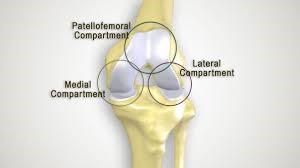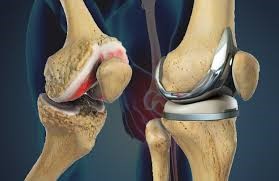Dr. Akshay Shetty Orthopaedics
Best knee replacement in HSR layout
Knee Arthroplasty
Knee replacement is a surgical procedure to reconstruct a knee affected by arthritis or severe knee injury. The worn-out knee joint surfaces are scraped and capped by high-quality metal alloy and plastic parts. Knee range of motion, strength, and the extent of damage are assessed through x-rays and the need for surgery is evaluated.
ARTHRITIS-
Arthritis is an inflammation of a joint. The knee is divided into three compartments: medial (inside), lateral (outside) and patellofemoral (front). Arthritis can be present in one, two or three compartments. Over time, the loss of the smooth covering on the ends of bones (aka – articular cartilage) causes pain and stiffness. This can lead to pain with motion or rest, swelling, clicking or grinding and a loss of strength. When the cartilage is damaged, the bones rub against each other during joint motion due to the loss of cartilage spacer effect, resulting in “bone-on-bone” arthritis. When arthritis progresses and becomes severe new bone formation occurs around the joint called osteophytes which again will lead to pain and stiffness.
Causes-
There are 3 types of Arthritis – 1) Senile 2) Inflammatory 3) Post Trauma
1)Senile Arthritis also called ‘ Wear & Tear’ Arthritis is age-related and is usually seen in old age. This arthritis results in mechanical or alignment issues of the lower limb.
2) Inflammatory Arthritis can affect any age. This is a part of systemic inflammatory disorders like Rheumatoid, Lupus, Ankylosing Spondylitis, Psoriatic Arthritis etc… Chemical mediators in the blood due to Systemic inflammatory disorders land up in the joint and lead to the destruction of the joint. If this issue is addressed in the initial stages, then high chances of joint salvage are there or else most of the cases end up in Joint Replacement Surgery.
3) Post Trauma Arthritis is seen in patients who have a prior history of injury to the joint. Fractures leading to cartilage damage, neglected ligament (ACL) and meniscus tears lead to Early Wear & Tear of the joint.
Symptoms-
Pain, swelling, stiffness and loss of strength are the most common symptoms. Pain can be isolated to the medial, lateral or patellofemoral aspects of the joint or be generalized discomfort around the knee. Pain and swelling in the back of the knee may be from Baker’s Cyst, an area of the fluid collection caused by arthritis. A ‘grinding’, ‘clicking’ or ‘locking’ sensation may be felt. Loss of motion can become severe, and the patient may have trouble performing activities of daily living. Patients who have arthritis of the isolated patellofemoral joint may not have pain while normal walking and they have difficulty mainly in squatting, lunges, climbing and getting down the stairs.
Diagnosis-
A thorough physical & clinical examination by an Orthopaedician is very much essential followed by Weight Bearing Standing X-rays in 2-3 different views. Xrays may demonstrate decreasing space between the bones (joint space narrowing), bone spurs (osteophytes) and deformity with bent knee.
Treatment –
1) Non-Operative- Most of the cases of Osteoarthritis can be managed without any surgery unless and until it is in stage 4 with a high degree of severity and deformity. 1st step in management is Physical therapy, which involves involves strengthening of muscles which surround the joint. If muscles are strong and in good condition, less stress will be put on bony architecture and hence less wear and tear. Your surgeon may prescribe anti-inflammatory medication or offer an injection to reduce the inflammation. Certain cartilage supplements may be beneficial to decrease pain and inflammation.
2) Operative- When non-operative treatment is not successful, your Surgeon may advise you of Joint Replacement Surgery. Three surgical options are available for knee arthritis. Arthroscopy of the knee through a keyhole may be beneficial to “clean out” and wash out the worn and torn debris of the knee. Although not a cure, this procedure may provide relief in patients suffering mechanical symptoms, such as catching and locking. The definitive treatment for knee arthritis is joint replacement surgery. Your surgeon will scrape and resurface the bone ends where the cartilage has worn away, with metal alloy and plastic implants. Partial or Total Knee replacement can be done depending on the involvement of knee compartments.
Consult Dr. Akshay Shetty, the best orthopedic surgeon for knee replacement in HSR Layout. Get expert diagnosis and treatment for arthritis and severe knee injuries to regain mobility and reduce pain effectively.
Partial Knee Replacement
In situations where the ailment is restricted to only one side of the knee, the inner side in most cases, the option of having a partial, also referred to as unicompartmental, knee replacement is considered.


Total Knee Replacement
It is very apt and precise to name this Surgery as Knee Resurfacing Proceedure as this involves only scraping and resurfacing of worn out areas of Knee joint and replacing with metal alloy caps and Ultra High Molecular Weight Polyethylene.

